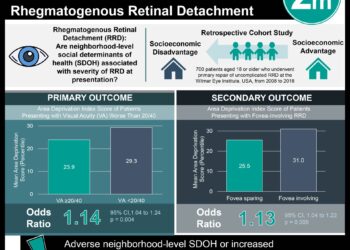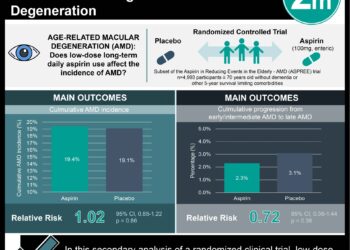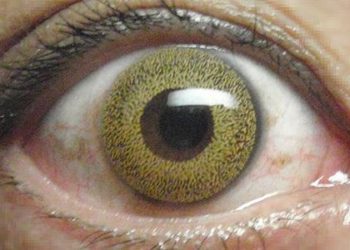Intra-arterial thrombolysis in central retinal artery occlusion can benefit some patients
Image: PD
1. Among incomplete central retinal artery occlusion (CRAO), those who received thrombolysis had a significant visual acuity improvement at the final visit compared to standard therapy group (0.83 vs. 1.57 logMAR respectively; p=0.020).
2. Early reperfusion was significantly higher with thrombolysis compared to standard therapy (74.1% vs. 42.9%; p=0.005).
Evidence Rating Level: 2 (Good)
Study Rundown: The appropriate management of retinal occlusive disease has been a longstanding issue. Prior studies had demonstrated that there is no benefit to intra-arterial thrombolysis. However, the prior studies did not evaluate long-term effects of thrombolysis. This South Korean study demonstrates the potential value of thrombolysis in certain types of CRAO, specifically incomplete cases. The data seem to suggest that thrombolysis can significantly improve vision among this group of patients in the long-term. While this conclusion may be clinically important, it is unclear whether the injection of antithrombotic agents into the ophthalmic artery is truly safe and more importantly, cost-effective. No significant adverse effects were reported in this particular study. In addition, the sample size in this study is relatively small (especially the incomplete CRAO group) given its retrospective nature.
Click to read the study in IOVS
Relevant Reading: Central retinal artery occlusion: local intra-arterial fibrinolysis versus conservative treatment, a multicenter randomized trial
In-Depth [retrospective study]: Patients were grouped on 2 axes – treatment received and extent of central retinal artery occlusion (CRAO). Patients either received intra-arterial thrombolysis (IAT) or standard therapy (ST), which consisted of ocular massage and intraocular pressure reduction. The extent of CRAO was graded into 3 categories – incomplete, subtotal, and total. Division into the IAT and ST groups was dependent on time since onset of symptoms. IAT was performed by injecting urokinase with a microcatheter placed within the ophthalmic artery. Visual acuity (VA) was compared between the IAT & ST groups at one-month and at a final visit months later. Early (prior to 3 days) and final (1 month) rates of reperfusion were also assessed. MRI scans were obtained to identify any intraparenchymal hemorrhage. Initial, 1-month, and final visit VA was not statistically significant between the groups. However, among incomplete CRAO, the IAT group had a significant improvement in VA at the final visit compared to the ST group (0.83 vs. 1.57 logMAR respectively; p=0.020). The percentage of incomplete CRAO patients with VA of better than 20/200 at the final visit was significantly higher with IAT compared to ST (p<0.01). Early reperfusion was significantly higher with IAT compared to ST (74.1% vs. 42.9%; p=0.005). No cerebral hemorrhages were noted with IAT therapy.
By Swarup Swaminathan and Andrew Bishara
More from this author: Argus II retinal prosthesis significantly improves spatial vision in blind patients, Artificial cornea is well retained in patients with ocular surface disease, High prevalence of undiagnosed glaucoma in West Africa, Interferon therapy is superior to methotrexate for uveitis, Rho kinase inhibitor safely reduces intraocular pressure
© 2013 2minutemedicine.com. All rights reserved. No works may be reproduced without expressed written consent from 2minutemedicine.com. Disclaimer: We present factual information directly from peer reviewed medical journals. No post should be construed as medical advice and is not intended as such by the authors, editors, staff or by 2minutemedicine.com. PLEASE SEE A HEALTHCARE PROVIDER IN YOUR AREA IF YOU SEEK MEDICAL ADVICE OF ANY SORT.







